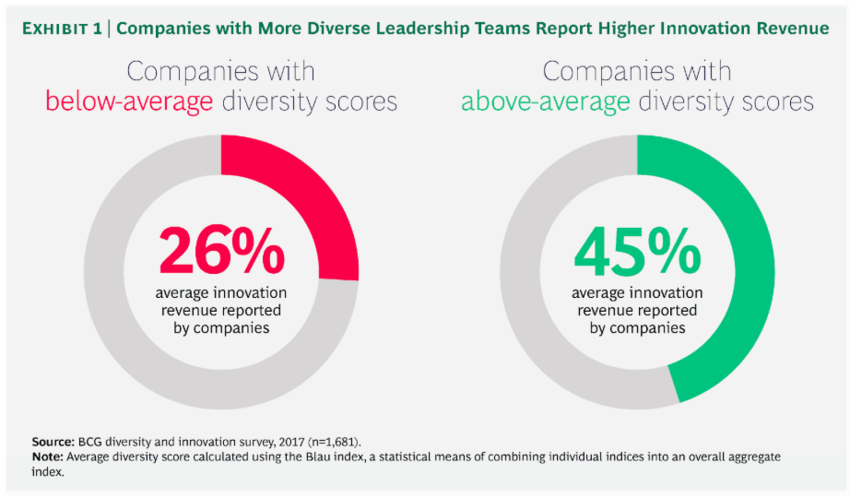Diversity, Equity, Inclusion & Belonging
Welcome!
A Perspective: Global and Local Diversity, Equity, Inclusion and Belonging (DEI&B)
To achieve and sustain global and local DEI&B is to comprehend and establish a universally shared definition. This document is to provide organizational leaders with a framework that will influence local and global contextual complexities such as political agendas, dominant cultures, religion, and gender, including diverse perspectives on forming a continuing fluctuation of the meaning of “Diversity, Equity, Inclusion and Belonging.”
An organization’s global mission statement must prove beyond mere rhetoric to perform and excel in its endeavors. The commitment to DEI&B must be a shared vision equal to the effort to create monumental and momentous success. An organization’s global and local vision must surpass the standard quo for DEIB that exist today. The end goal is to live authentically and culturally to achieve a competitive and innovative workplace throughout the world by fostering common areas within DEI&B, globally and locally.
Global and local DEI&B initiatives are challenged by geographical distance, various time zones, technology and new and ever evolving virtual relationships, language barriers, and distinctive cultural values, unconscious bias, assumptions, poor planning, and lack of adequate cultural research. Competing on a local and global scale with the Internet of Things (IoT) require a sustained effort to integrate cultural competence and inclusive values towards a broader vision for organizational progress and development.
Creating Sustainable Global Diversity, Equity, Inclusion and Belonging (DEI&B)
The primary question is how are global diversity, equity, inclusion and belonging accountability systems established and measured to be considered successful?
Rapid globalization requires a new and innovative perspective for DEI&B. Cultural competence intersecting with U. S. based traditional diversity and inclusion efforts that address equality and inclusion along the lines of gender, race, disability, age, religion, and sexual orientation is limiting. Organizations must consider adapting and learning from other cultures, thus creating a universal definition that speaks to a global and local audience. Effective DEI&B must be presented a held as an important strategic business imperative and cultural competency to facilitate greater value to the company and its stakeholders.
In developing global DEI&B cultural competence, most corporate strategic planning processes focus on the four “As”: Analysis, Action Planning, Alignment, and Assessment. However, strong implementation and integration business modeling and cultural competence have a greater impact. Sustainability and innovation congruent with change management are key components of strategic business planning.
- Implementation and Integration:
- Create a shared understanding of global and local DEI&B and cultural competence.
- Give responsibility and ownership to every level of employees and local organizations, while supporting integrated monitoring and support
- Engage senior leaders in the organization, hold them accountable, and create positive team experiences that will establish barrier breakage
- Establish network, affinity groups and diversity councils (using a methodology consistent an organization’s culture and employee relations philosophy)
- Sustainability and Innovation:
- Provide ongoing Change Management Training and Development for every level of leadership starting with executive leaders
- Best-practice organizations operationalize and integrate DEI&B into day-to-day to ensure greater business performance and results.
- Build a global team that reflects the company’s diverse global employee, consumer, clients, and shareholder base
- Incorporate DEI&B into mentoring, advocacy, and sponsorship efforts integrated with ongoing leadership development at all levels of the organization
- Foster communication channels for sharing and learning throughout the organization
- Develop assessment tools for measuring progress on an ongoing basis
- Develop a DEI&B Dashboard and measure progress and celebrate milestones on an ongoing basis
- Respect human rights; dignity and respect always
- Respect local customs and business practices
- Respect diversity of thought; your way may be ideal, however consideration of all perspectives is the best way
Building a Global Diversity and Inclusion Team
Simple having diverse leaders will not suffice as diverse leadership must prevail for DEI&B to be effective. DEIB is not simple representation. DEI&B will be effective when the methodology and approach is to orchestrate and create a space for all members to contribute in a meaningful way.
To achieve this, organizations can leverage human capital by selecting talent from diverse backgrounds, nations and regions, corporate levels, genders, sexual orientations, generations, ability groups, and skill sets. Removing barriers can be transformative and innovative is lead with engagement and intentional retention. Globally diverse teams can benefit by paying special attention to the following best practices:
- Team Development: Illuminate roles, responsibilities, and functions. Assess, analyze, design solutions, develop, and implement DEI&B key diversity solutions globally, locally, regionally, and by country and link them to the organization’s strategic plan and business objectives.
- Process Improvement: Create a collaborative shared team process; team vision to accomplish certain objectives; clarify roles, expectations, communication, methodology, protocol, decision modeling, and ongoing feedback.
- Cultural Competency: Construct an environment of authenticity; self- awareness, self-efficacy, and build a dynamic feedback system that will challenge status quo to leverage DEI&B to change the trajectory of day to day to visionary exemplary performance and achievement.
- Conflict-Solution: Open inquiry, diverse perspectives and solutions-oriented methodology using conflict to create solutions; the process of discovering the reasons behind differing perspectives, question behind the question, and to solutions that could not have been reached regardless of the situation.
- Strategic Communication: The Pandemic forced all of us into a virtual environment and changed the technological approach in our professional and personal lives. Effective communication is key to having a collaborative and highly productive work environment; we are all better when we work together.
- Leading global teams can be remarkable with a profound methodology that is designed with the structure, support through corporate resources, and strong backing from senior leadership. Virtual global and local teams can excel in terms of communication, efficiency, innovation, and performance outcomes.
Forming Responsible and Measurable Systems
To be effective, organizations must tie DEI&B directly to measurable outcomes. Assessing the impact of a DEI&B given the different reporting requirements and laws from country to country will require research and development to establish proficiency in measuring success. The essential action is to customize a dashboard and measurement system that adequately addresses the organization’s mission, goals, and strategic plan. It is imperative to reflect, review, own constructive feedback and responsible for the accountability process.
The metrics may include the following:
- Parity in development and training activities at all levels (Front Line to the Board Room)
- Measure and track new hires, promotions, rolling 13-month turnover by gender, race, nationality, ethnicity, etc.
- Achievement of strategic plan DEI&B goals
- New Business Development
- Client Retention
- Engagement Scores (Including Mid-Year and Pop-Up Pulse Checks)
- Virtual meetings, conferences, and event survey feedback
- Client and Customer concurrent satisfaction survey(s) by demographic segment
- Complaints or legal actions
- Benchmarking DEI&B among best practice organizations. Benchmarking strategies include identify areas for improvement, research best-practice organizations, infuse best practice strategies into the organization’s infrastructure, and revisit the strategic plan to re-tool or update DEI&B:
- Utilize and deploy leading edge best practices by developing an on-going implementation and Change Management process planning, inclusive of budget/financial analysis-ROI, selling the business case, and acquiring organizational leadership support through effective communication processes
- Measure results, analyze ROI, report results
DEI&B and cultural competence in the global marketplace is a strategic business imperative and a true asset to enhance the customer experience, client satisfaction and increase sustainability, profit, and shareholder value.
Dr. Vivian Smith-Del Toro https://globalexecutivebusinessconsultants.com


